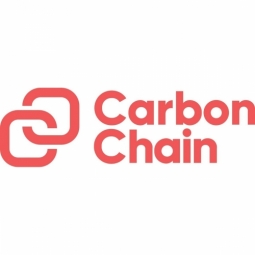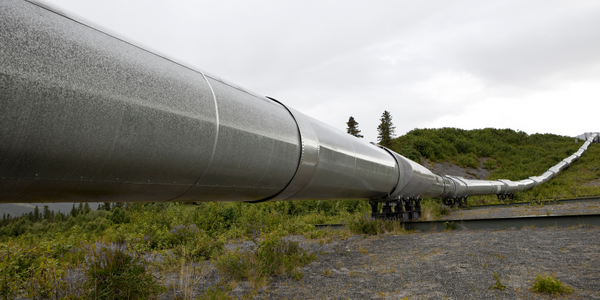Customer Company Size
Large Corporate
Product
- CarbonChain Platform
- AI-powered Carbon Accounting Software
Tech Stack
- AI-powered Carbon Accounting
- Cloud-based Platform
Implementation Scale
- Enterprise-wide Deployment
Impact Metrics
- Cost Savings
- Environmental Impact Reduction
- Digital Expertise
Technology Category
- Analytics & Modeling - Predictive Analytics
- Platform as a Service (PaaS) - Data Management Platforms
Applicable Industries
- Oil & Gas
- Transportation
Applicable Functions
- Logistics & Transportation
- Business Operation
Use Cases
- Supply Chain Visibility
Services
- Cloud Planning, Design & Implementation Services
- Data Science Services
About The Customer
Gunvor Group Ltd is one of the world's largest independent commodities trading houses by turnover. The company specializes in creating logistics solutions that safely and efficiently move physical energy and bulk materials from their sources and storage locations to where they are most in demand. Gunvor is a global leader in naphtha trading, a key component in the production of gasoline and other petrochemical products. The company operates in a highly competitive and regulated industry, where compliance with environmental standards and customer demands for transparency in emissions data is increasingly important. Gunvor's operations span the globe, and they are committed to meeting the evolving needs of their customers while pursuing lower-carbon trading practices.
The Challenge
Gunvor, a global leader in naphtha trading, faced a significant challenge when a key customer requested comprehensive greenhouse gas (GHG) emissions data for all their naphtha trades. This request covered the entire supply chain, from the extraction of crude oil and condensate to the delivery of naphtha at the customer's gate. Gunvor had limited information about their supply chain emissions, with some calculations for their own vessels but lacking data for upstream oil and gas activities and the processing of oil into naphtha, except for their own refineries. To calculate the entire supply chain carbon footprint for every trade, Gunvor needed to gather raw data from various sources and access time-sensitive, asset-level GHG emissions information, which was difficult, expensive, or impossible to obtain. This process, along with the subsequent data analysis, calculation, and reporting, posed a huge challenge, as well as a cost and time burden.
The Solution
To address the challenge, Gunvor partnered with CarbonChain to run a carbon accounting pilot between September and October 2021. CarbonChain assisted Gunvor's logistics and naphtha trading teams in exporting all relevant raw data from their internal systems, easing the data-gathering burden. Using their AI-powered carbon accounting software, CarbonChain provided Gunvor with emissions calculations, analyzing and organizing the data into a tangible per-cargo analysis of each trade's emissions. All GHG emissions were included, calculated as carbon dioxide equivalents (CO2e). This comprehensive report provided Gunvor with an overall supply chain carbon footprint, as well as a trade-by-trade analysis, formatted to meet their customer's specific requirements. The report, based on an independent database, can be audited and certified. Following the pilot, Gunvor was set up on CarbonChain's cloud-based carbon accounting platform for automated, ongoing emissions tracking. This platform allows Gunvor to directly upload raw supply chain documentation, with CarbonChain's AI-powered technology quantifying the carbon footprint with asset-level breakdowns for each trade, facilitating tracking, reporting, and target-setting.
Operational Impact

Case Study missing?
Start adding your own!
Register with your work email and create a new case study profile for your business.
Related Case Studies.

Case Study
Taking Oil and Gas Exploration to the Next Level
DownUnder GeoSolutions (DUG) wanted to increase computing performance by 5 to 10 times to improve seismic processing. The solution must build on current architecture software investments without sacrificing existing software and scale computing without scaling IT infrastructure costs.

Case Study
Remote Wellhead Monitoring
Each wellhead was equipped with various sensors and meters that needed to be monitored and controlled from a central HMI, often miles away from the assets in the field. Redundant solar and wind generators were installed at each wellhead to support the electrical needs of the pumpstations, temperature meters, cameras, and cellular modules. In addition to asset management and remote control capabilities, data logging for remote surveillance and alarm notifications was a key demand from the customer. Terra Ferma’s solution needed to be power efficient, reliable, and capable of supporting high-bandwidth data-feeds. They needed a multi-link cellular connection to a central server that sustained reliable and redundant monitoring and control of flow meters, temperature sensors, power supply, and event-logging; including video and image files. This open-standard network needed to interface with the existing SCADA and proprietary network management software.

Case Study
Refinery Saves Over $700,000 with Smart Wireless
One of the largest petroleum refineries in the world is equipped to refine various types of crude oil and manufacture various grades of fuel from motor gasoline to Aviation Turbine Fuel. Due to wear and tear, eight hydrogen valves in each refinery were leaking, and each cost $1800 per ton of hydrogen vented. The plant also had leakage on nearly 30 flare control hydrocarbon valves. The refinery wanted a continuous, online monitoring system that could catch leaks early, minimize hydrogen and hydrocarbon production losses, and improve safety for maintenance.

Case Study
Airport SCADA Systems Improve Service Levels
Modern airports are one of the busiest environments on Earth and rely on process automation equipment to ensure service operators achieve their KPIs. Increasingly airport SCADA systems are being used to control all aspects of the operation and associated facilities. This is because unplanned system downtime can cost dearly, both in terms of reduced revenues and the associated loss of customer satisfaction due to inevitable travel inconvenience and disruption.

Case Study
IoT-based Fleet Intelligence Innovation
Speed to market is precious for DRVR, a rapidly growing start-up company. With a business model dependent on reliable mobile data, managers were spending their lives trying to negotiate data roaming deals with mobile network operators in different countries. And, even then, service quality was a constant concern.








